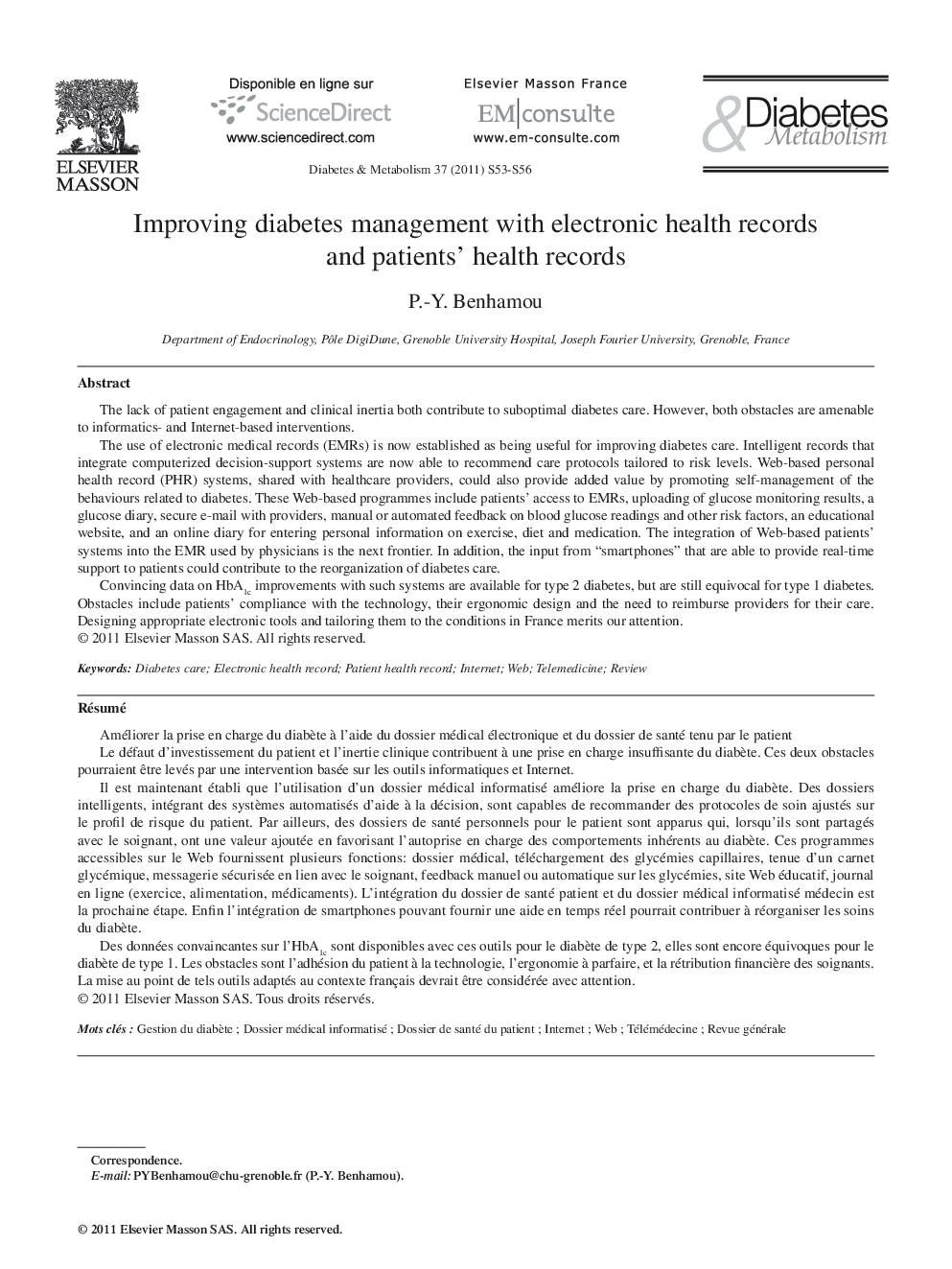| Article ID | Journal | Published Year | Pages | File Type |
|---|---|---|---|---|
| 3260159 | Diabetes & Metabolism | 2011 | 4 Pages |
The lack of patient engagement and clinical inertia both contribute to suboptimal diabetes care. However, both obstacles are amenable to informatics- and Internet-based interventions.The use of electronic medical records (EMRs) is now established as being useful for improving diabetes care. Intelligent records that integrate computerized decision-support systems are now able to recommend care protocols tailored to risk levels. Web-based personal health record (PHR) systems, shared with healthcare providers, could also provide added value by promoting self-management of the behaviours related to diabetes. These Web-based programmes include patients’ access to EMRs, uploading of glucose monitoring results, a glucose diary, secure e-mail with providers, manual or automated feedback on blood glucose readings and other risk factors, an educational website, and an online diary for entering personal information on exercise, diet and medication. The integration of Web-based patients’ systems into the EMR used by physicians is the next frontier. In addition, the input from “smartphones” that are able to provide real-time support to patients could contribute to the reorganization of diabetes care.Convincing data on HbA1c improvements with such systems are available for type 2 diabetes, but are still equivocal for type 1 diabetes. Obstacles include patients’ compliance with the technology, their ergonomic design and the need to reimburse providers for their care. Designing appropriate electronic tools and tailoring them to the conditions in France merits our attention.
RésuméLe défaut d’investissement du patient et l’inertie clinique contribuent à une prise en charge insuffisante du diabète. Ces deux obstacles pourraient être levés par une intervention basée sur les outils informatiques et Internet.Il est maintenant établi que l’utilisation d’un dossier médical informatisé améliore la prise en charge du diabète. Des dossiers intelligents, intégrant des systèmes automatisés d’aide à la décision, sont capables de recommander des protocoles de soin ajustés sur le profil de risque du patient. Par ailleurs, des dossiers de santé personnels pour le patient sont apparus qui, lorsqu’ils sont partagés avec le soignant, ont une valeur ajoutée en favorisant l’autoprise en charge des comportements inhérents au diabète. Ces programmes accessibles sur le Web fournissent plusieurs fonctions: dossier médical, téléchargement des glycémies capillaires, tenue d’un carnet glycémique, messagerie sécurisée en lien avec le soignant, feedback manuel ou automatique sur les glycémies, site Web éducatif, journal en ligne (exercice, alimentation, médicaments). L’intégration du dossier de santé patient et du dossier médical informatisé médecin est la prochaine étape. Enfin l’intégration de smartphones pouvant fournir une aide en temps réel pourrait contribuer à réorganiser les soins du diabète.Des données convaincantes sur l’HbA1c sont disponibles avec ces outils pour le diabète de type 2, elles sont encore équivoques pour le diabète de type 1. Les obstacles sont l’adhésion du patient à la technologie, l’ergonomie à parfaire, et la rétribution financière des soignants. La mise au point de tels outils adaptés au contexte français devrait être considérée avec attention.
